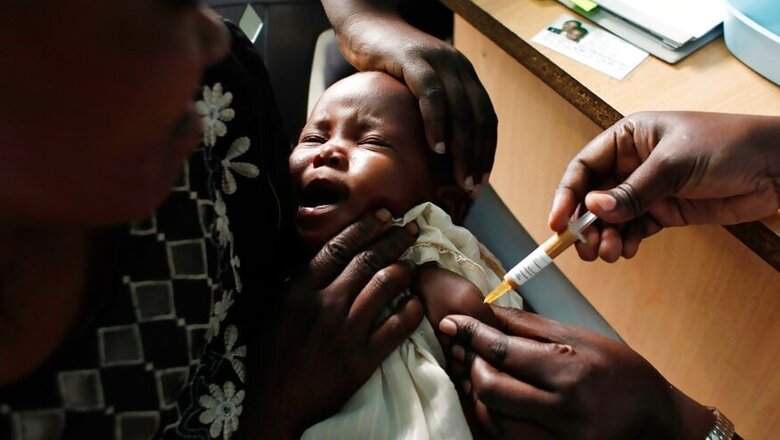
views
The onset of monsoon brings a host of mosquito-borne diseases like dengue, malaria, chikungunya, zika virus among others. The mosquitoes that spread these monsoon diseases breed in stagnant water. According to the latest data available with National Vector Borne Disease
Control Programme (NVBDCP) under the Union Health Ministry, India recorded 66,313 cases of malaria until May 2019. The data also reported 13 deaths at the same time.
As per the NVBDCP data, India recorded 11,69,261 malaria cases in 2015, 10,87,285 in 2016, 8,44,558 in 2017 and 4,29,928 cases in 2018.
The number of deaths due to malaria also remained on a decline as 384, 331, 194 and 96 deaths were reported in 2015, 2016, 2017 and 2018, respectively.
It is worth mentioning that India is making efforts to eliminate malaria by 2030.
According to malaria report released by the World Health Organization (WHO) in November 2018, India reported 3 million fewer cases in 2017, a decrease of 24 percent compared with 2016. The report further said that India is on track for 20-40 percent reduction. In spite of being the highest-burden country of the region, India showed a decline of 22 percent in reported cases within a year.
According to the Union Ministry of Health and Family Welfare, nearly 70 percent malaria cases in India are contributed by five of 36 states and Union Territories. These include Odisha (36 percent), Chhattisgarh (12 percent), Jharkhand (9 percent), Madhya Pradesh (9 percent) and Maharashtra (5 percent).
These state and northeastern states including Meghalaya, Mizoram, Nagaland, which have a vast forest area, hills, tribal and conflicted areas, accounted for most number of malaria cases in the country. Odisha reported a remarkable decline of 80 percent malaria cases and deaths in 2017.
National Framework for Malaria Elimination (NFME) 2016-2030 document has been launched by the Union Health Ministry in February 2016. The framework emphasized the vision, mission, broad principles and practices to achieve the target of eliminating malaria by 2030 synchronising with the Global Technical Strategy (GTS) for Malaria 2016-2030 of WHO.
The government has also looked at the scientific perceptive for the elimination of vector-borne disease - malaria. In April 2019, the Indian Council of Medical Research (ICMR) launched the Malaria Elimination Research Alliance (MERA)- India, a conglomeration of partners working on malaria control. The principal activity of the Alliance is to prioritise, plan, conduct, scale-up and translate relevant research in a coordinated and combinatorial way in order to have a tangible impact of the research on people who are a risk for malaria.
There are two human malaria parasites - Plasmodim vivax and Plasmodim falciparum – which are predominant in India. In most of the hilly and tribal high burden areas, P. falciparum is predominantly present with limited P. malaria cases.
A study titled — Malaria elimination in India — the way forward — published in latest issue of Journal of Vector-Borne Disease done by ICMR, has highlighted that though India is in malaria elimination mode, and set targets for malaria-free status by 2030, diagnosis and treatment of asymptomatic falciparum malaria cases remains a challenge for health care practitioners.


















Comments
0 comment